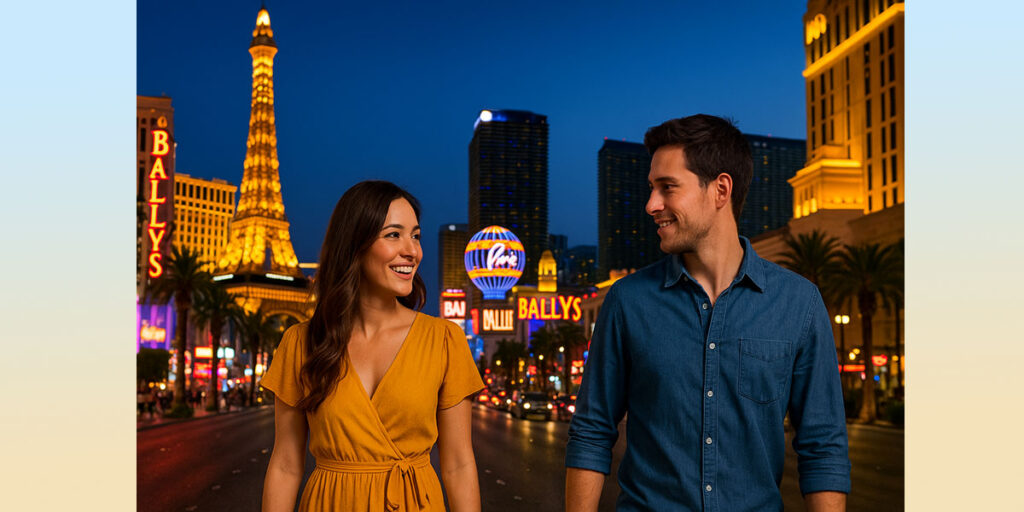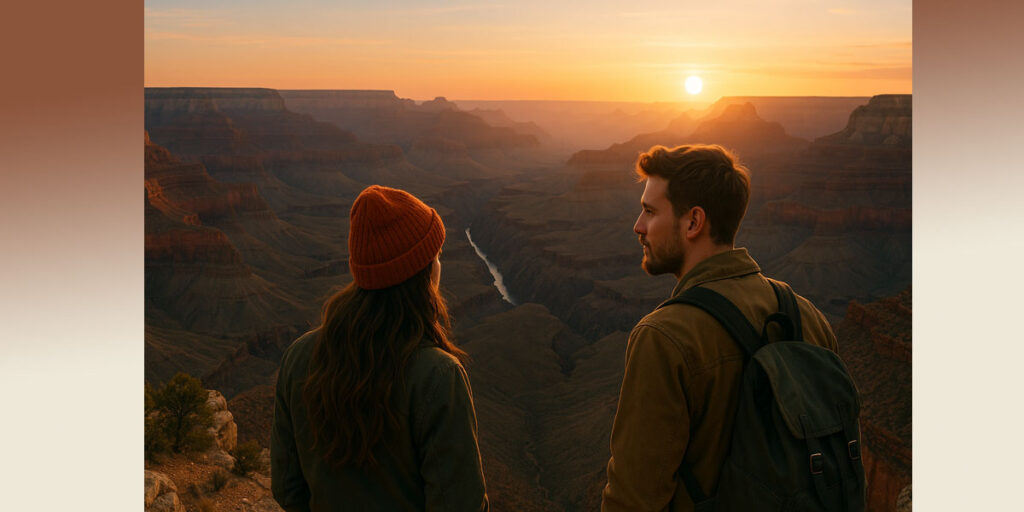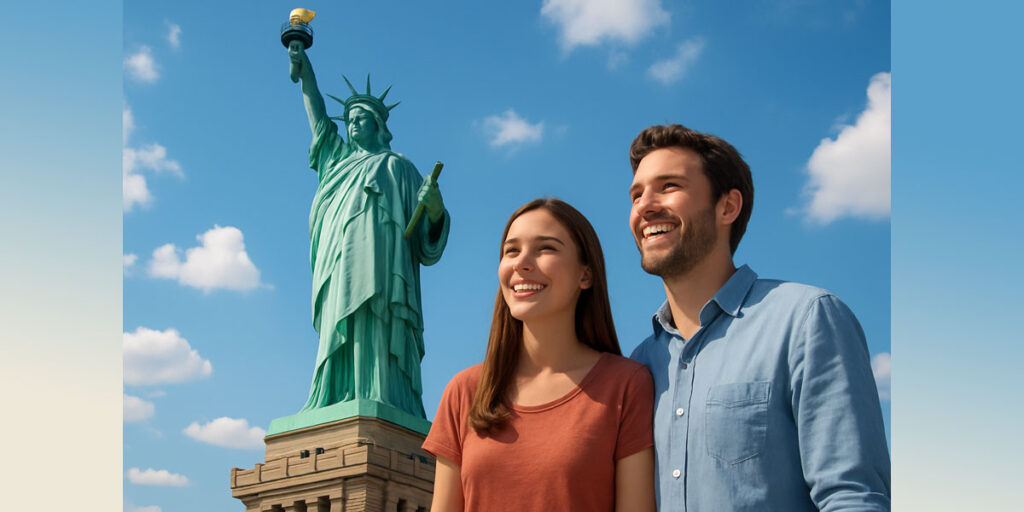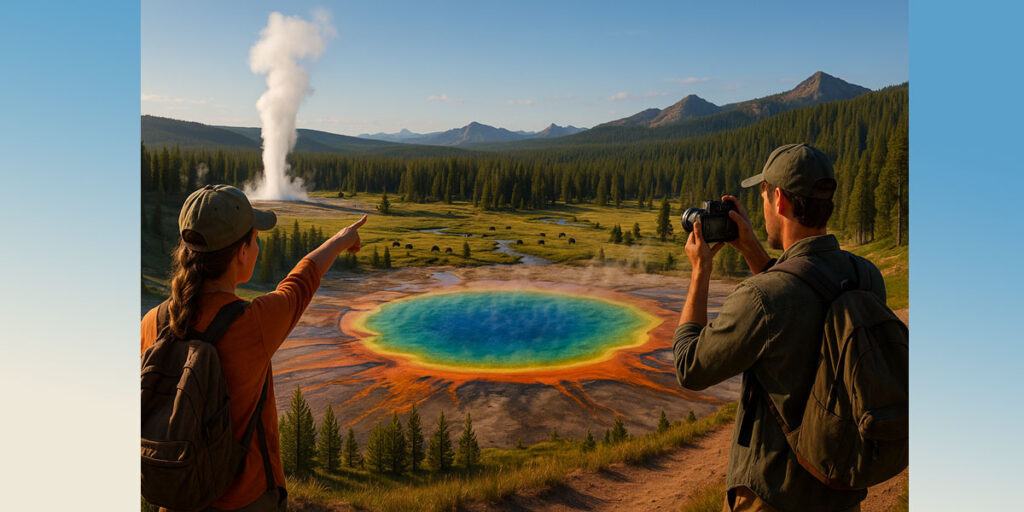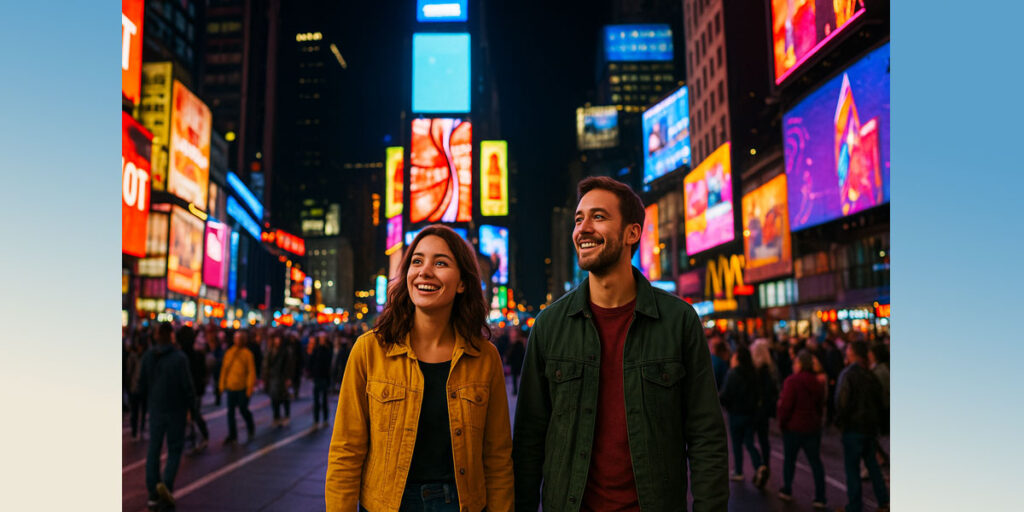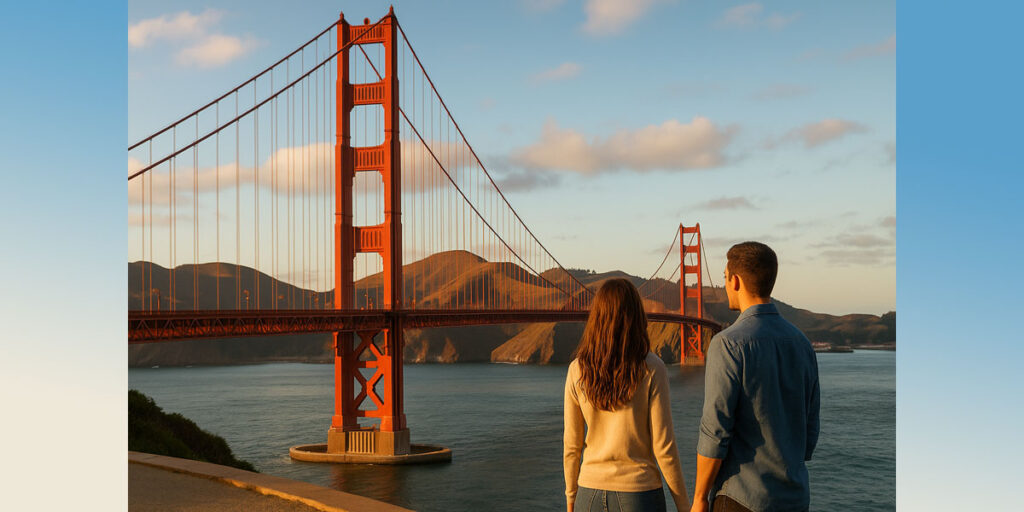Question 1: What sparked the birth of the Las Vegas Strip?
Answer: Imagine a dusty desert road under a fiery sunset, where in 1905 a few hopeful visionaries laid the first rails of what would become Las Vegas. Over the decades, as neon signs flickered to life like fireflies in the night, entrepreneurs built lavish casino-hotels along this artery—first the Pair-o-Dice Club in 1931, then the legendary Flamingo in 1946. Nestled in the Mojave Desert’s Paradise Valley, this stretch of South Las Vegas Boulevard transformed from sagebrush to spectacle. Today, history lovers stroll beneath replica Eiffel Towers and Roman fountains, tracing each hotel’s origin plaque by the glow of marquee lights. The most enchanting time to begin this journey is at twilight, when day’s heat eases and the Strip’s neon crown truly takes shape—around 6:30 PM in spring or fall, and just after 7 PM during peak summer daylight.
Question 2: How does the geography of the Strip shape its dazzling appeal?
Answer: Close your eyes and feel the warm desert breeze drifting across a broad, straight boulevard flanked by palm trees and grand façades. Carved out at the southern edge of the Las Vegas Valley, the Strip stretches roughly 4.2 miles from Mandalay Bay to Sahara, snaking through an otherwise arid landscape. Its flat terrain allowed architects to conjure soaring replicas of world landmarks—from the Sphinx guarding the Luxor pyramid to the golden peaks of the MGM Grand. In the morning light, you’ll see the Spring Mountains standing guard behind the casinos, a silent reminder of the rugged backdrop beyond the neon oasis. To witness this geographic symphony at its most vivid, plan your walk between 5 PM and 7 PM, when the sun dips behind distant ridges and the desert air cools, revealing the Strip’s true palette of color and shadow.
Question 3: When is the best time to experience the magic of the Strip?
Answer: Picture yourself stepping onto warm pavement as the sky shifts from apricot to indigo. The ideal hour arrives just after sunset—around 8 PM in winter months and as late as 9 PM in summer—when the Strip’s kaleidoscopic lights awaken in full force. History whispers from each corner: the clink of dice in casinos born during Prohibition, the swing of Rat Pack tunes drifting from old-style lounges, and the echo of high-stakes glamour that defined mid-century Vegas. Geographically, the Strip’s wide sidewalks and central median allow crowds to gather beneath towering signs, creating a communal pulse that feels both intimate and grand. For a truly memorable visit, aim for midweek evenings in May or October—when temperatures hover near a comfortable 75 °F—so you can wander freely without the scorch of summer or the crowds of holiday weekends.
Question 4: How did neon lighting transform the desert nightscape?
Answer: Picture a starless desert suddenly ablaze in electric hues—when the first neon tubes curled above casino marquees in the late 1940s, they didn’t just advertise tables and rooms, they summoned a new era. Innovators like Thomas Young and his Las Vegas Neon Museum collaborators installed colorful glass tubing that turned South Las Vegas Boulevard into a glowing ribbon against the Mojave’s stark darkness. Geographically, the flat valley floor acted like a natural stage, reflecting vibrant signs in shimmering heat haze. To experience this neon renaissance at its zenith, stroll the Strip between 8:30 PM and 10:30 PM, when the signs blaze brightest and the desert sky retreats into inky velvet.
Question 5: What inspired the themed architecture and how do the mountains enhance the effect?
Answer: Imagine Roman columns and Eiffel spires rising from the desert, each casino a fairy-tale castle born of ambitious “destination” concepts in the 1990s. Architects looked to ancient civilizations and global icons to lure travelers, while the distant Spring and Sheep Mountains provided a dramatic, natural backdrop—like a live canvas framing each façade. In early evening light, just before sunset (around 6 PM in summer, 5 PM in winter), you’ll see shadows stretch across replica ruins and towers, giving them an almost cinematic depth. That golden hour is when the desert’s geography amplifies each theme, turning concrete into legend.
Question 6: How does desert heat shape daytime Strip adventures?
Answer: Envision neon giants slumbering under a searing sun—since the 1950s, hoteliers have embraced the Mojave heat by designing sprawling pool complexes and shaded promenades. In 1955, the Sands began hosting “daylight swim parties,” forging a new midday entertainment tradition. The Strip’s long, straight boulevard heats quickly, averaging 100 °F by mid-afternoon in July. To beat the blaze, start your exploration at first light—between 7 AM and 9 AM—when the air is coolest, hotel gardens glisten with dew, and you can wander from Mandalay Bay to the Venetian in comfort before the sun climbs too high.
Question 7: What tale lies behind the Bellagio Fountains’ grand debut?
Answer: Envision a serene lake suddenly dancing to orchestral crescendos—when the Bellagio opened in 1998, developer Steve Wynn commissioned water-master Michel Cristofari to create an aquatic spectacle that would outshine every neon sign. Carved into the Strip’s central lagoon, just south of Caesars Palace, the fountains exploit the valley’s flat basin to throw jets nearly 460 feet into the air. History whispers in each synchronized spray, recalling the night of October 15, 1998, when the inaugural show set hearts racing. For the most spellbinding view, arrive at twilight—around 7:30 PM in spring or fall—when the lights begin to shimmer on the water’s surface, and shows run every 15 minutes until midnight.
Question 8: How do Paris-themed bridges knit the Strip’s bustling quarters together?
Answer: Picture cobblestone spans arching over a sea of tourists—these pedestrian bridges trace back to the early 2000s, when city planners sought to tame growing foot and vehicle traffic along the 4.2-mile corridor. Each walkway, linking hotels like Paris Las Vegas and Planet Hollywood, rises above South Las Vegas Boulevard to grant safe passage and panoramic glimpses of the Mojave horizon. Geographically, these bridges thread through the median, cutting across a dusty valley floor turned neon highway. To feel the pulse of evening crowds without jostling, cross between 6 PM and 7 PM in March or October, when the air is cool and the sunset ignites the Strip’s skyline in molten gold.
Question 9: When does the Strip whisper instead of roar?
Answer: Imagine neon giants taking a midday nap—on weekday mornings from 9 AM to 11 AM, especially in February or June, the Strip’s usual flurry gives way to hushed footsteps and lingering café conversations. This lull dates back to the 1970s, before round-the-clock tourism, when casinos offered early-bird breakfast shows and locals strolled most serenely. Geographically, the desert sun hasn’t yet turned the asphalt to hot coals, and the wide sidewalks feel almost private. It’s the perfect moment to trace the Strip’s history plaques, snap photos of empty promenades, and sip a mint julep at a shaded cabana before the afternoon’s glittering madness returns.
Question 10: What makes the High Roller wheel a modern marvel on the Strip?
Answer: Picture this: in 2014, amidst the palm-lined exhale of the LINQ Promenade, engineers hoisted the High Roller—at 550 feet, the tallest Ferris wheel in North America—into Las Vegas’s skyline. Set on the flat boulevard just east of the Flamingo’s fountains, its 28 glass cabins circle slowly, granting bird’s-eye views from the glimmering MGM Grand to the distant Spring Mountains. To catch its most breathtaking panorama, book a sunset ride around 7:45 PM in May or September, when the desert sky burns gold and the Strip’s neon web begins to flicker alive beneath your feet.
Question 11: Where can you find a slice of greenery amid neon and asphalt?
Answer: Imagine entering a hidden courtyard lush with ficus trees and fragrant jasmine—since the 1990s, resorts like Wynn and The Palazzo have imported living gardens to tame the Mojave heat. Nestled on the Strip’s western flank, these oases occupy former parking lots, transforming flat desert plots into shaded alcoves. Leveraging the valley’s sunny days, horticulturists installed shaded retractable roofs and misting systems by 1998. The ideal moment to wander these emerald retreats is weekday mornings between 8 AM and 10 AM in April or October, when the air still holds dawn’s cool promise and the gardens whisper secrets of desert survival.
Question 12: When do erupting flames tell the Tale of The Mirage Volcano?
Answer: Envision volcanic embers bursting skyward against the velvet night—on June 1, 1989, The Mirage debuted its fire-and-water spectacle along the Strip’s center, setting a new standard for themed attractions. Built atop the valley’s level plain, the show’s hidden geysers and pyrotechnic jets draw directly from underground water pumps, casting sparks across the casino’s lagoon. For the most dramatic effect, stand at the curbside viewing area just south of the main entrance at 9 PM in summer or 8 PM in winter, when the desert’s cool air makes each flame roar extra bright and the night sky frames every fiery plume perfectly.
Question 13: How did the Strip become a stage for epic nightlife residencies?
Answer: Picture a velvet-draped showroom where, in 2003, Celine Dion stepped onto Caesars Palace’s Colosseum stage and redefined the residency concept. Her 100-plus performances drew waves of fans, inspiring other global stars to anchor themselves here rather than tour. Geographically, these state-of-the-art theaters nestle behind the Strip’s glittering façades, buffered by concert halls instead of slot machines. To catch the hush before the roar, arrive at 7 PM—about an hour before showtime—on a Tuesday or Wednesday in November or March, when the desert chill adds crispness to the evening and lines are shortest.
Question 14: What secret lies beneath the pedestrian tunnels of CityCenter?
Answer: Imagine slipping below the neon bustle into a cool, glass-walled passage—when CityCenter opened in 2009, its designers built subterranean walkways to link Aria, Waldorf Astoria, and The Crystals shopping pavilion. Carved into the Strip’s limestone bedrock and shielded from traffic and heat, these tunnels showcase contemporary art installations and whisper history of the valley’s geological layers. For the most serene experience, descend around 11 AM on a weekday in February or September, when art-lovers drift through uninterrupted and the desert sun presses gently above, unseen but warmly felt.
Question 15: When do the Strip’s casinos reveal their architectural secrets?
Answer: Envision early morning sunlight bathing ornate columns and hidden courtyards—between 8 AM and 10 AM, many casino lobbies open to non-gamblers, offering guided “behind-the-scenes” tours that trace design influences from Art Deco to neoclassical. This tradition began in the late 1990s when historic preservationists convinced resorts to celebrate their own breadth of styles. To join these peek-behind-the-velvet-rope moments, book a tour on a Thursday or Friday in May or October, when the Strip hums quietly with anticipation and staff are at their most welcoming before the midday rush.
Question 16: How did shopping on the Strip evolve into a luxury experience?
Answer: Imagine stepping into vast, air-conditioned atriums where Chanel and Gucci boutiques neighbor artisan chocolatiers. In 2003, The Forum Shops at Caesars Palace pioneered this “retail theater,” merging Romanesque architecture with high-end brands. Geographically, these shopping palaces occupy former desert sands east of the Flamingo–they stretch across the Strip’s median, creating pedestrian bridges that feel like pathways through an urban bazaar. For the richest ambiance, arrive around 10 AM on a weekday in June or September—just as shops open and before the afternoon sun warms the boulevard—when sunlight filters through glass ceilings and displays glimmer like desert gems.
Question 17: What makes weddings on the Strip an iconic affair?
Answer: Picture a chapel lit by neon crosses, where Elvis impersonators croon “Can’t Help Falling in Love” beneath the glow. Since the 1960s, Vegas chapels dotted along the Strip transformed quick “drive-thru” marriages into themed ceremonies—from Gothic cathedrals to Polynesian luaus. These venues sprouted on flat parcels of the Mojave, capitalizing on Nevada’s no-wait marriage licenses. To catch that perfect photo under soft light, schedule your vows between 5 PM and 6 PM in April or October—when the western sun slants through stained-glass windows, painting your ceremony in rose-gold hues before the neon evening takes over.
Question 18: When do seasonal events bring new rhythms to the Strip?
Answer: Envision the boulevard alive with pop-up art installations, holiday lights, or music festivals. Each December, beginning the first week, the Strip dons millions of twinkling white bulbs, recalling a 1990s tradition to lure winter visitors. In spring’s first weekend of April, the annual Electric Daisy Carnival floods open lots adjacent to the Strip with EDM beats under the desert stars. Geographically, these events spill off the asphalt into parking expanses east of the main casinos. To join the most vibrant moments, plan your visit around 7 PM—when lights or music reach their crescendo—on opening night, whether it’s the first Friday of April for EDC or the second Saturday in December for holiday lighting.
Question 19: What role do theatrical productions play on the Strip?
Answer: Picture a velvet-draped theater tucked behind the Caesars Palace colonnade, where in December 1993 the first Cirque du Soleil show, Mystère, leaped onto the Strip and forever changed Vegas entertainment. These awe-inspiring productions—now numbering over a dozen across resorts like the Bellagio and MGM Grand—blend acrobatics, music, and storytelling beneath custom-built stages. Geographically, their theaters sit just off the boulevard’s main flow, offering audiences a respite from neon bustle. To catch the magic at its sweetest, plan for an evening performance beginning around 7:30 PM in June or September, when the desert air cools and the pre-show lounge buzz feels electric.
Question 20: Where can you explore the Strip’s neon heritage up close?
Answer: Imagine stepping aboard a shuttle at the Mirage porte-cochère as it winds north, carrying you to the Neon Museum’s Boneyard Gallery. Founded in 1996, this outdoor “graveyard” preserves retired signs—each one a glowing relic from bygone Strip landmarks. Although the site lies just over two miles north of the Sahara, pickup shuttles depart from select Strip hotels at 5 PM daily. Visiting then allows you to wander among towering letters and pulsing tubes as dusk falls, watching each historic sign rekindle under a desert skyline.
Question 21: What is the optimal time to photograph the Strip’s skyline?
Answer: Envision lining up your shot on the pedestrian bridge above the Boulevard as day surrenders to night. The magic hour—known as “blue hour”—occurs roughly 20 minutes after sunset, around 8 PM in July and closer to 7 PM in December. At this moment, the sky’s deep sapphire backdrop contrasts with the Strip’s flickering neon, while the distant Spring Mountains silhouette the scene. History buffs note that photographers have gathered here since the early 2000s, drawn by the Strip’s ever-evolving skyline. For the clearest vistas, choose a weekday in April or October, when humidity is low and crowds have thinned.
Question 22: How did the Strip become a global culinary crossroads?
Answer: Picture caravan traders exchanging spices at an oasis—by the late 1990s, Las Vegas chefs were doing something similar, importing world flavors into grand resort kitchens. When the Venetian opened in 1999, it brought celebrity chef Emeril Lagasse’s first out-of-New Orleans restaurant to the desert, proving that even on sun-baked sands, high-end cuisine could flourish. Geographically, these destination restaurants cluster along the central Strip corridor—drawing on supply lines from California farms and international imports. To savor the scene at its freshest, book a late-afternoon tasting around 4 PM in May or September, when kitchen crowds are calmer, patio breezes are gentle, and you can watch neon reflections dance in your wine glass as dusk approaches.
Question 23: What made hotel lobby shows a daytime spectacle?
Answer: Imagine bellhops trumpeting showgirls down a mirrored corridor—starting in 1956 at the Sahara, resorts created lavish lobby revues to liven the post-breakfast lull. These theatrics spilled into grand atriums, where columns echoed with live orchestras and dancers in sequined gowns. The flat, open-plan designs of newer megaresorts perpetuate this tradition, offering free performances beneath glass domes and sky-ceiling murals. For the most immersive experience, arrive at 11 AM on a weekday in March or November—just as dancers take the stage and natural light floods through overhead, casting every costume in vibrant clarity.
Question 24: When can you chase penny-slot nostalgia before the crowds arrive?
Answer: Envision ancient one-armed bandits clinking in a quiet casino corner—before video slots took over, machines like the Liberty Bell lined smoky back halls from the 1930s onward. Today, vintage penny slots still live on near the ends of older properties like the Golden Nugget, echoing the Strip’s gambling roots. Because these machines sit off the main thoroughfare, their quiet hours persist later into the morning. To snag that retro pull-handle moment, head in between 9 AM and 11 AM on a Wednesday or Thursday in April or October—when pedestrian traffic is light, and you can hear each nickel drop with nostalgic resonance.
Question 25: What makes a helicopter tour over the Strip an unforgettable adventure?
Answer: Picture yourself lifting off from a small tarmac just west of the Mandalay Bay in the early 1990s, when Las Vegas Helicopters began offering aerial journeys. As your chopper climbs over the flat Mojave basin, the Strip unfurls beneath like a glowing ribbon—St. Louis archways at Paris Las Vegas give way to the pyramid of Luxor, all framed by the distant Spring Mountains. For the most cinematic experience, book your flight around 7 PM in May or September—just as the sun kisses the horizon and the boulevard below ignites in neon brilliance.
Question 26: How did professional sports carve out a home on the Strip?
Answer: Imagine the roar of 65,000 fans echoing off the desert air—when the Raiders relocated in 2020, Allegiant Stadium rose from the sands south of Mandalay Bay in record time. Positioned on the valley’s broad, level floor, the sleek black-and-silver arena contrasts sharply with neighboring casino silhouettes. To feel the electricity of game day, arrive by 6 PM for an 8 PM kickoff on a Thursday or Sunday night in October—when the early autumn chill drifts across the lawn and the Strip’s lights twinkle as your backdrop.
Question 27: When is the ideal moment to wander the Strip’s hidden art galleries?
Answer: Envision walking through a serene glass atrium beneath Aria’s towers, pausing before a 40-foot steel sculpture installed in 2010. The CityCenter complex and adjoining casinos quietly house collections by Maya Lin, Nancy Rubins, and more, scattered across plazas and subterranean tunnels. To explore these art treasures in peace, plan your visit between 10 AM and 12 PM on a weekday in April or October—when galleries open, the desert sun bathes installations in soft light, and fellow art seekers are few, letting you savor each work without the glare of slot-machine bells.
Question 28: What story does the Vegas Monorail whisper about urban innovation?
Answer: Imagine gliding above the Strip on sleek steel beams—when the Vegas Monorail opened in 2004, planners sought to tame ground-level congestion by threading a 3.9-mile transit line from MGM Grand to the Sahara. Suspended just east of the boulevard’s neon heart, its elevated guideway snakes past casino rooftops and parking garages, hinting at a future where desert cities evolve vertically. To catch the desert sun glinting off its streamlined cars, ride between 4 PM and 6 PM in May or September, when the air is cooler, the valley’s shadows stretch long, and you can spot the snow-capped Spring Mountains on the western horizon.
Question 29: How did Venetian gondolas bring Renaissance romance to the desert?
Answer: Picture pastel façades and serenading gondoliers amid neon backdrops—when The Venetian opened in 1999, its replica Grand Canal turned flat parking lots into a Venetian waterway, complete with hand-painted bridges and indoor skylights. Carved into the Strip’s western side, this mile-long voyage blends Italian architecture with climate-controlled comfort. For the most authentic serenade, board at the indoor port around 10 AM on a weekday in April or October, when the faux-skies glow with soft morning light, canal waters mirror pastel arches, and you can drift past miniature St. Mark’s Square before the afternoon crowds swirl in.
Question 30: When is the perfect hour to brave the Big Apple Coaster’s twists and turns?
Answer: Envision racing through a skyline of steel lions and Art Deco spires—when New York-New York debuted its Big Apple Coaster in 1997, it became the Strip’s first roller coaster, darting over the casino’s jagged roofline. Perched on the boulevard’s east edge, its 184-foot drop and heart-lining loops exploit the valley’s flat terrain to maximize speed. To feel the desert breeze and neon blur in harmony, queue up just after sunset—around 8:15 PM in summer or 7 PM in winter—when cooler air heightens the thrill and the Strip’s lights streak by in a kaleidoscope beneath your feet.
Question 31: How did The Cosmopolitan’s digital chandelier redefine Strip luxury?
Answer: Imagine stepping into a soaring lobby where 2,745 crystal modules hang like a constellation—when The Cosmopolitan opened in 2010, its “Chandelier” bar installed what was then the world’s largest multi-story chandelier, each crystal lit by programmable LEDs. Geographically slotted between Bellagio and CityCenter, this suspended art piece transforms throughout the day: warm ambers at brunch, cool blues at cocktail hour, and vibrant purples after sunset. To watch its light choreography at peak effect, settle into a lounge seat around 6 PM—just as the Strip’s neon ignites—on a weekday in May or September, when the bar is lively but not yet packed, and the chandelier’s shifting hues mirror the desert dusk outside.
Question 32: What wonders await in the Bellagio Conservatory & Botanical Gardens?
Answer: Picture a glass-domed oasis of seasonal flora flourishing in the Mojave—since 1995, the Bellagio has transformed part of its flat parking-lot footprint into a 14,000-square-foot horticultural marvel. Designers import hundreds of thousands of blooms—tulips in spring, chrysanthemums in autumn—and arrange them around ornate fountains and topiary sculptures. Geographically, this enclave sits just behind the casino floor, shielded from Boulevard noise by tinted windows. For the most enchanting visit, arrive at 9 AM on a weekday in March or October—when morning light streams through the conservatory’s vaulted panes, temperatures are cool, and you can stroll unhurried among blossoms that rarely last beyond five weeks.
Question 33: When should you soar above the Strip on the Fly LINQ Zipline?
Answer: Envision yourself racing along steel cables above crowds—opened in late 2013, the Fly LINQ Zipline launches riders from 114 feet up, sending them hurtling down the LINQ Promenade toward the High Roller at speeds up to 35 mph. The platform perches above the boulevard’s eastern sidewalk, offering aerial views of adjacent casinos and distant mountain ridges. To catch the perfect blend of light and atmosphere, book the inaugural evening slot at 7:30 PM in June or September—when the sun dips low, the Strip’s neon reflection sparkles on your visor, and the desert air is still warm enough to feel like flying on a summer night.
Question 34: How did the Strip’s street performers become part of its living tapestry?
Answer: Imagine a mariachi band suddenly filling the night air with spirited trumpets, or a fire dancer tracing flickering patterns against neon backdrops. Since the 1970s, impromptu performers—magicians, dancers, stilt walkers—have claimed corners of the Strip’s wide sidewalks, drawn by the valley’s forgiving flat ground and endless pedestrian flow. Geographically, you’ll find them clustered near hotel entrances where foot traffic is heaviest—often by 6 PM when the desert sun softens. To catch the most dazzling acts before crowds swell, arrive around 7 PM in May or October, when temperatures hover near 75 °F and the performers’ costumes glint under both streetlamps and fading daylight.
Question 35: What secret ingredient makes the Venetian’s ceiling frescoes come alive?
Answer: Picture an indoor “sky” that shifts from dawn to dusk—when The Venetian opened in 1999, artists painted its Grand Canal ceiling with faux clouds using special ultra-violet paints. Hidden UV fixtures gradually change brightness, so the “daylight” above feels real, echoing Venetian plazas bathed in sunlight. Flat desert air and controlled temperatures preserve the illusion year-round. The optimal time to witness this sky theater is around 10:30 AM on a weekday in April or September—when the indoor sun peaks and the painted clouds drift exactly where real ones might, turning a flat ceiling into an uncanny taste of Italy’s open air.
Question 36: When does the Strip’s pulse become a serene heartbeat at dawn?
Answer: Envision the Boulevard almost empty, save for early joggers and delivery crews—the window between 5 AM and 7 AM offers a rare glimpse of the Strip in repose. Long before slot machines awaken, the desert’s cool morning breeze drifts across the flat asphalt, and you can hear distant birdsong mingled with the hum of conveyor-belt luggage systems. History recalls that even in the 1950s, night owls and shift workers wandered these hours, but today it’s a cherished secret. To experience it, rise before sunrise—around 5:30 AM in spring or fall—when neon bulbs still glow faintly against the predawn sky, and the Strip feels less like a carnival and more like a sleeping giant ready to stir.
